
23 minute read
COLUMNIST ARTICLES
SMSF Trustees – Should You Purchase Collectables?
ACCOUNTANT
By Warren Strybosch
SMSFs trustees need to be aware of the various compliance risks surrounding collectables, as the asset class requires continued consideration and how it can impact a SMSF.
With low interest rates, SMSF trustees are looking for alternative investments to place their funds into which has led to an increase in collectables within SMSFs. However, care needs to be given to the restrictive rules surrounding the holding of collectables in a SMSF.
Collectables and personal-use assets include artwork, jewellery, antiques, artefacts, coins, stamps, books, memorabilia, wine, cars, bikes, recreational boats and club memberships. Bullion is not included as its value is based on intrinsic weight and purity.
One of the restrictions with collectables, is that they cannot be leased or used by a related party or stored in a private residence of a related party. The SMSF can only lease them to unrelated parties e.g., to an art gallery, and it must be possible to show the transaction was completely at arm’s length.
Even with vintage cars held with an SMSF, the related party cannot drive it for any reason, even if it is for maintenance purposes or to get restoration work done on the vehicle.
When it comes to storage of these type of assets, they must be remote; not located in a trustee’s private residence – that includes the land they own. As such, artwork and vehicles, cannot he displayed in a trustee’s home or stored in a purpose built shed on their property. Records must be kept by trustees showing how the decision was made to store the items.
Lastly, the items must be insured by the SMSF and not in a trustee’s individual name or under a business entity they might own. If the SMSF cannot insure the collectibles appropriately so that the asset is secure for members in the future, then the fund must dispose of that asset. Whilst collectibles are a different asset class to hold within the SMSF and may seem ‘sexy’ when telling friends and other’s you own such an asset, given the limited ability to use or display such an asset, trustees need to consider whether or not holding such an asset is worth all the hassle.
At Find Accountant, we provide SMSF tax advice. Our senior accountant is also an award-winning financial advisor. If you require SMSF advice or are considering whether or not to wind up your SMSF, then speak to Warren Strybosch at Find Accountant Pty Ltd.
Warren Strybosch
You can call them on 1300 88 38 30 or email info@findaccountant.com.au www.findaccountant.com.au


WARREN STRYBOSCH
Find Group
The founder of the Find Group of companies draws on his diverse background, which ranges form teaching, to serving in the army, to taxation and accounting, to coach and help clients live their best financial lives. A multi-award winner, Warren’s innovative approach in business means he was a champion of virtual financial advice long before the pandemic. Warren established the Find Foundation, which owns and operates across Victoria.
TOP 50 MOST INFLUENTIAL FINANCIAL ADVISER IN AUSTRALIA
The financial advisers featured in this guide are a diverse group: some specialise in responsible investment advice, some provide financial advise to specific professions, and some focus on addressing market gaps, mwith several finding themselves on the list for the very first time. But they all have one thing in common: they all wield influence that can create the blueprint for the future of financial advice in Australia. Not all of them are faniliar names but just because they are not making a lot of noise doesn't mean they are not making waves. Meet our Power 50.
Early To Bed Makes For A Healthy Heart

Nina Massey (Australian Associated Press)
Going to sleep between 10pm and 11pm is associated with a lower risk of developing heart disease compared to other bedtimes, new research suggests.
The study found that compared to sleep onset from 10pm to 10.59pm, there was a 25 per cent higher risk of cardiovascular disease brought on by dropping off at midnight or later.
There was a 12 per cent greater risk caused by falling asleep from 11pm to 11.59pm, and a 24 per cent increased risk if you doze off before 10pm, according to the study.
Further analysis by sex suggested the association with increased cardiovascular risk was stronger in women, with only sleep onset before 10pm remaining significant for men.
“The body has a 24-hour internal clock, called circadian rhythm, that helps regulate physical and mental functioning,” study author Dr David Plans, of the University of Exeter in the UK, said. “While we cannot conclude causation from our study, the results suggest that early or late bedtimes may be more likely to disrupt the body clock, with adverse consequences for cardiovascular health.”
While a number of studies have investigated the link between sleep duration and cardiovascular disease, the relationship between sleep timing and heart problems has not received as much attention.
The study included 88,026 people in the UK recruited between 2006 and 2010.
The average age was 61 years, with a range between 43 and 79, and 58 per cent were women.
Researchers collected data on sleep onset and waking time over seven days using a device worn on the wrist.
Participants completed demographic, lifestyle, health and physical assessments and questionnaires.
They were then followed up for a new diagnosis of cardiovascular disease, which was defined as a heart attack, heart failure, chronic ischaemic heart disease, stroke, and transient ischaemic attack.
During an average follow-up of 5.7 years, 3172 participants (3.6 per cent) developed cardiovascular disease, according to the study published in European Heart Journal – Digital Health, a journal of the European Society of Cardiology.
According to the paper, the incidence was highest in those with sleep times at midnight or later and lowest in those with sleep onset from 10pm to 10.59pm.
“Our study indicates that the optimum time to go to sleep is at a specific point in the body’s 24-hour cycle and deviations may be detrimental to health,” Dr Plans said.
“The riskiest time was after midnight, potentially because it may reduce the likelihood of seeing morning light, which resets the body clock.”
“While the findings do not show causality, sleep timing has emerged as a potential cardiac risk factor – independent of other risk factors and sleep characteristics.”
How To Create Space And Time To Do It All!

RESILIENCE COACH
By Sally Higoe
“The key is not to prioritise what’s on your schedule but to schedule your
priorities” – Stephen Covey
That can be tricky this time of year. As Christmas approaches, along with a reprieve from COVID confinement, it can be hard to be intentional as to how you will spend your time – meetings, luncheons, EOY gatherings, school activities, planning, finalising... all of it can seem an important way to meet our needs. But you’ve worked hard to get where you’re at and now is not the time to be distracted.
One of the keys to running your business effectively is to know exactly how to prioritise what needs to be done, and when. The alternative is piles of to-do lists, disorganisation, random jobs and tasks, things forgotten and a slower growth of your business. So why is it that some people ‘have’ time and others never ‘have enough’? Realistically, every one of us has access to the same amount of time.
Perception. Time and the amount of time we have is based on our perception. Sharon Pearson of the Coaching Institute states “If you play at the level where you know you do what is important to you, and makes you feel good, and don’t do anything else, you will be able to assess what you value currently in your life and your business.”
As humans, we have a preference for pleasure... we want this more than the feeling of pain. When a task is perceived as challenging, we relate this to pain...
it’s going to be hard, I’ll have to concentrate, how long WILL it take me to do? So we justify with reasons to avoid doing it at all... and we take the more pleasurable option – the task that can be achieved quickly or easily and most definitely, more enjoyably.
The results you are getting in your business right now will be a direct reflection of this simple principle.
If you love starting projects, you will likely have lots in the pipeline, some great brainstorming sessions and probably not a lot of profitable results on an ongoing basis. If you love going straight for the profit, at any cost, you will probably not have many fulfilling relationships around you – culture and motivation will be low level.
You get the idea.
Where we place our efforts, we will see the results. Results are a direct reflection of our efforts.
Is it possible to change what we associate as pleasurable and what we associate as pain?
What if you made a conscious decision to link your efforts to the results that you want?
This can be done in two ways -
• Link huge pleasure to what needs to be done • Make a decision to do what needs to be done, even if it causes you pain
LINKING PLEASURE TO WHAT NEEDS TO BE DONE
Make a list of all the positives that come of the ‘painful’ activity. For example, if you don’t like goal setting, link more pleasure to it by writing the following;
• I will know exactly what action to take
• I will have satisfaction knowing where
I’m headed
• I will avoid procrastination
• I will feel more worthy and purposeful as I consistently achieve
• I will know exactly how to guide my team
• I will know where to focus trainings
• I will know where ‘stretches’ are needed
Linking a list of pleasures to the undesired activity certainly makes it more appealing and doable... in fact there is even some excitement built around it and an urgency to accomplish it.
MAKE A DECISION TO DO WHAT NEEDS TO BE DONE, EVEN IF IT CAUSES YOU PAIN
The only difference between ‘successful’ people and those that aren’t are how they push through, the discipline they can maintain to overcome fear and pain and do what needs to be done (instead of only what they like to do!)
It is this kind of decision-making that will set you apart from the rest. It is discipline.
It’s important to find balance in your role, to maintain the ability to ‘choose’ how you will spend your time, to meet your needs and continue growing. This technique gives you the freedom to do just that - to own your time and feel good about how you’re doing it.
If you need more information on scheduling your tasks, appointments, weeks... and life!... email me on sally@team-resilience.com. au and mention this article. We’ll book you in for a free call and chat about how you can reach your goals with much more ease, right now.
This is your opportunity to make 2022 your best year yet – FOCUS on what matters, achieve the results you’re after!
For more discussion and tips around empowering your staff to embrace and excel in change, email me and let’s chat – sally@team-resilience.com.au
Sally Higoe
Team/Leadership Coach Team Resilience Method
0490388017 sally@team-resilience.com.au
Leadership and Team Development
.....Imagine a team where each individual is so strong in self that their focus is how to move together as one....
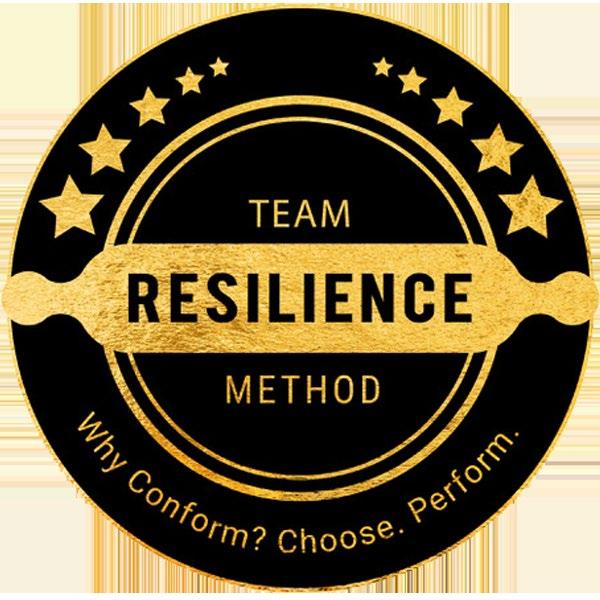
SERVICES
LEADERSHIP COACHING & DEVELOPMENT
TEAM COACHING & DEVELOPMENT
BEHAVIOURAL PROFILING
BUSINESS GAP ANALYSIS
IN-HOUSE & ONLINE TRAINING
WORKSHOPS/WEBINARS Leadership coaching that connects your team and drives results
CONTACT
SALLY HIGOE
Resilience Coach Team Resilience Method
0490 388 017
sally@team-resilience.com.au www.team-resilience.com.au
What Investments Should I Hold In My Portfolio?
FINANCIAL PLANNING
By Warren Strybosch
Whether you own a SMSF, are an accumulator, or a retiree, it is a golden rule of investing to diversify your super/ pension assets. In other words, not to have all your eggs in one basket.
In the past, managed funds have been a very popular investment choice. There were single sector managers, index managers, growth managers, multimanagers, and so on. The list of fund managers has grown exponentially over the last 20 years as technology evolves. Whilst fund managers have been the main stay of investment for many years, Exchange Traded Funds (ETFs) and Listed Investment Companies (LICs) have grown in popularity. Whilst technology has made it easier to choose different types of investments, it is becoming unclear as to which type of investment should be chosen. For many, there is the fear they might miss out or be placed in the wrong type of investment. This is especially so for those who are moving into their retirement phase of their lives. They do not want to risk their hard-earned savings that has taken them over 30 years to accumulate being lost through poor investment choices.
So, what is the ‘right’ type of investment one should consider investing in?
To help you choose the right investments we have summarised the main technical points related to some of the key investments out there in the marketplace:
What are LICs and ETFs?
Listed investment companies (LICs) are the great grandfathers of the listed managed investment scene, with a history going back almost 100 years. LICs provide exposure to a basket of underlying securities, often shares, although increasingly there are funds providing exposure to other asset classes, such as fixed income.
Exchange Traded Funds (ETFs) invest in a basket of shares or other investments that generally track the performance of a market index such as the ASX200 Index or the US S&P500.
You can buy an ETF to give you exposure to an entire market, region such as emerging markets, market sector such as global health or technology stocks, or theme such as sustainability. They also offer investments in a wider range of asset classes, from local and international shares to fixed interest, commodities, currency, property, infrastructure and cash.
The most popular ETFs in 2020–21 were Australian and global equities, as sharemarkets rebounded strongly from the pandemic lows. The best-performing ETF were technology sectors and themes such as battery technology, robotics and AI and global cybersecurity.
Similarities:
1. ETFs and LICs are like managed funds in that are professionally managed but tend to have lower fees than most managed funds. 2. Like managed funds, ETFs and LICs, have your money pooled with other investors to create a large portfolio of assets. 3. All three allow you to gain exposure to other sectors and regions that traditional Australian shares cannot provide which in turn achieves greater diversification.
Differences?
1. ETFs and LICs can be bought and sold on the Australian Stock
Exchange (ASX) whereas most managed funds are bought directly via the fund manager themselves or through a financial advisor. However some fund managers are available via the ASX mFund Service but do not operate like shares. Where the price of shares, ETFs and LICs are live on the ASX, the un-listed managed funds, display the price at the close of trading each day. 2. Most ETFs simply passively track the index however there are some new
ETF players in the marketplace who claim to be active managers; utilising derivates, options and short-selling to try to outperform the index.Before choosing a fund, it’s important to understand how they work. Also look at their underlying investments, their performance and trading history, their tax status and distribution policy as well as their fees and cost. 3. LICs are companies traded on the ASX where the share price is determined by the market. They are closed-end structures which allow the fund manager to concentrate on investment selection without
having to factor in the possibility of money coming into or leaving the company. ETFs are open-ended which means units in the fund can be created or redeemed according to investor demand without the share price being affected. LICs are closed-ended investments, which mean they have a fixed number of shares on issue 3. LICs use a company structure whilst
ETFs, similar to managed funds, use a unit trust structure. 4. LICs pay company tax on their income and realised capital gains whereas ETFs are not required to pay tax on their income or realised gains.
LICs may hold on to their profits or pay them out as a dividend to their investors whereas, ETFs pass on all tax obligations to the investor who pays tax at their marginal rate. Despite the different ways these investments are structure for tax purposes, investors to tend to pay a similar amount of tax once income has been paid out. 5. ETFs tend to the more affordable of the three when it comes to fees with managed funds, especially active managed funds that charge a performance fee, being the costliest of the three investment choices to hold on to.
This information is current as at November 2021. This article is intended to provide general information only and has been prepared without taking into account any particular person’s objectives, financial situation or needs (‘circumstances’). Before acting on such information, you should consider its appropriateness, taking into account your circumstances and obtain your own independent financial, legal or tax advice. You should read the relevant Product Disclosure Statement (PDS) before making any decision about a product. While all care has been taken to ensure the information is accurate and reliable, to the maximum extent the law permits, Alliance Wealth and its related bodies corporate, or each of their directors, officers, employees, contractors or agents, will not assume liability to any person for any error or omission in this material however caused, nor be responsible for any loss or damage suffered, sustained or incurred by any person who either does, or omits to do, anything in reliance on the information contained herein.

Warren Strybosch
You can call them on 1300 88 38 30 or email
Triple Jab out now – a boost to all Victorians

By Warren Strybosch
Bendigonians will be one of the first group of Victorians to be administered the third job in a hope to reduce COVID numbers.
The third jab will only be available to those who have already had the two first jabs at least six months earlier.
The booster dose of the Pfizer vaccine will be offered to all eligible adults, regardless of the vaccine type received for their first and second shots.
Those wanting to receive their booster shot must provide proof of their first two COVID-19 vaccinations before they will be able to get the booster shot. However, the proof must be via your mobile device displaying the certificate or a copy of the certificate supplied via Medicare. It won’t be enough to simply show the card that was written on by the nurse who gave you the first and second vaccination shots as there are reports that some people have obtained these cards and falsified, they have been vaccinated already. For anyone caught with falsified documents we believe the fines are very hefty.
The booster dose will be offered to people over the age of 18 and who had their second COVID-19 vaccination over six months ago.
It is also believed that the health minister has stated that all state-run aged care residents and staff will be required to take the booster shot in the coming months.
It is reported that a Pfizer booster shot five months after a second dose reduces a person's risk of hospitalisation with the coronavirus by 93 per cent.
This is yet to be proven given we are all still living through the largest clinic trial on earth.
Victorian Nurses Can Be Fired But A Court Challenge Related To The Vaccine Mandate Is Likely Heading To Court

Many nurses are being forced to leave their jobs because they are either refusing to take the Covid-19 vaccination or refusing to disclose their vaccination status. A group of nurses from Monash Health, tried to stop unsuccessfully stop Monash Health, one of Victoria’s largest public health service, from allowing them to be fired – the court injunction was thrown out by the federal court.
A directive from Victoria’s chief health officer under the Public Health Act makes it clear that health workers must be fully vaccinated, having received at least their first Covid-19 vaccine dose by 29 October, in order to work in a healthcare setting. They must provide evidence of vaccination to their employer. As such, Monash Health has been given the green light to terminate it’s nurses if they do not take the jab. Justice John Snaden said that Monash Health had no choice but to fire them.
“…the evidence that there is very much suggests that the course that has been plotted has been plotted because Monash Health has formed the view that under the public health directions by which it is bound, they’re not permitted to do anything else [other than terminate employment],” he said.
Chris O’Grady QC, representing Monash Health, said the employer had simply been following the chief health officer’s directions. “In light of the CHO directions it goes without saying that anyone working in the health sector is going to have difficulty working in that sector absent their willingness to either be vaccinated or disclose their vaccination status,” he said. The only hope for those nurses who have not been vaccinated is the pending court case regarding the vaccination mandate. Snaden said when the matter goes to trial, if the court finds the vaccine mandate was unlawful, then the nurses would likely have their employment reinstated and receive back pay.
Therefore, the court had no reason to block disciplinary action including Monash Health firing the nurses in the meantime, he said.
Monash Health has given undertakings not to take action against the relevant nurses until the matter was determined. In light of Snaden’s decision, Health was now free to terminate the staff.
Less Children To Suffer From Heart-Attacks When Taking Pfizer
By Warren Strybosch
Pfizer adds ingredient used to stabilize heart attack victims in vax for kids
Buried on Page 14 in the Pfizer paperwork submitted to the FDA for the Covid vaccine for children is the following:
Vaccine formulation
Authorization is being requested for a modified formulation of the Pfizer BioNTech COVID-19 Vaccine. Each dose of this formulation contains 10 μg of a nucleosidemodified messenger RNA (mRNA) encoding the viral spike (S) glycoprotein of SARSCoV-2 that is formulated in lipid particles and supplied as a frozen suspension in multiple dose vials.
To provide a vaccine with an improved stability profile, the Pfizer-BioNTech COVID-19 Vaccine for use in children 5-11 years of age uses tromethamine (Tris) buffer instead of the phosphate buffered saline (PBS) as used in the previous formulation and excludes sodium chloride and potassium chloride. The packaged vials for the new formulation are stored frozen at -90°C to – 60°C. The frozen vials may bethawed and stored at refrigerator at 2°C to 8°C for up to 10 weeks.
Tromethamine (Tris) is a blood acid reducer which is used to stabilize people with heart attacks.
Here are known side effects: Respiratory depression, local irritation, tissue inflammation, injection site infection, febrile response, chemical phlebitis, venospasm (vein spasms), hypervolemia, IV thrombosis, extravasation (with possible necrosis and sloughing of tissues), transient decreases in blood glucose concentrations, hypoglycemia, and hepatocellular necrosis with infusion via low-lying umbilical venous catheters.

AMA Encourages Doctor’s Not To Abide By Their Own Code Of Conduct

By Warren Strybosch
The AMA Victoria president, Dr Roderick McRae, said those who do not believe Covid-19 is real or a threat should update their advanced care directives and inform their relatives that they do not wish to receive care in the public health system if diagnosed with the virus.
“Covid-deniers” and “anti-vaxxers” should opt out of care in the public health system if they catch the virus as Victoria reopens, says the Victorian branch of the Australian Medical Association. This statement by the AMA seems to flies in the face of the code of conduct that doctors must abide by when dealing with patients.
The Good Medical practice (the code) describes what is expected of all doctors registered to practice medicine in Australia. It also is intended to let the community know what they can expect from doctors.
Under section 3.4 Decisions about access to medical care, the code states:
Your decisions about patients’ access to medical care must be free from bias and discrimination. Good medical practice involves:
• 3.4.2 Not prejudicing your patient’s care because you believe that a patient’s behaviour has contributed to their condition.
• 3.4.3 Upholding your duty to your patient and not discriminating against your patient on grounds such as race, religion, sex, gender identity, sexual orientation, disability or other grounds, as described in antidiscrimination legislation. • 3.4.7 Not allowing your moral or religious views to deny patients access to medical care, recognising that you are free to decline to personally provide or directly participate in that care.
We understand these are trying times for everyone involved, but we are disappointed that the AMA has politized their role and encouraged doctors and nurses to go against their core values of why they joined the profession e.g., to care for all people needing medical attention.
Maybe someone in his profession needs to remind Dr Roderick McRae of his own code for which he should be abiding by? This language can only be seen as inflammatory in a time that is already stressful for medical practitioners in Victoria.
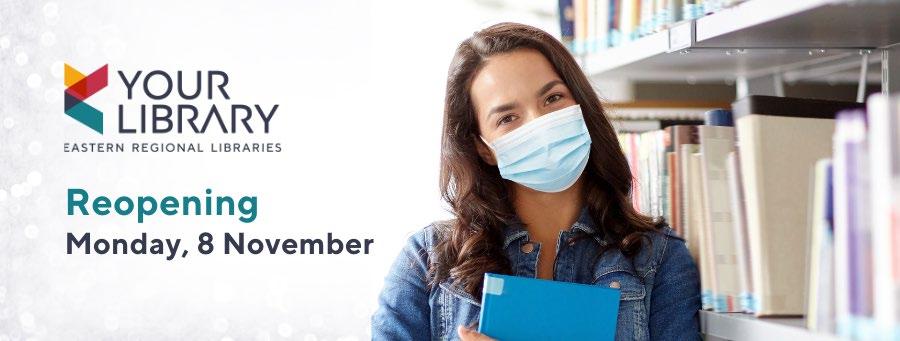
Welcome back to Your Library!
We are so excited to welcome you back! From Monday 8 November, our libraries will open in line with government guidelines. Libraries will open:
• Monday-Friday, 9am-5.30pm• Saturday, 10am-1pm • Sunday, 12pm-5pm (select branches only) • *Some variations will apply. Find your local library here.
Your safety, and the safety of our staff, is our number one priority. When we reopen, all of our staff will be fully vaccinated. Conditions of entry will include:
Supporting you in proving your vaccination status and accessing your library

You must show proof of COVID-19 vaccination (or a signed medical exemption)

Density limits of 1 person per 4 square metres will apply
You must check-in using the Service Victoria app (available on our iPads in branch)


The hand sanitizer provided must be used before entry to the library
You must continue to wear a mask while indoors (unless you have a lawful exemption*)
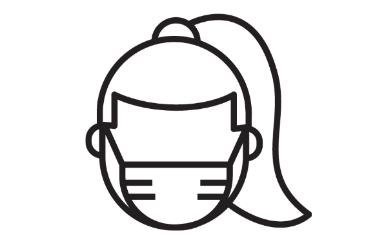
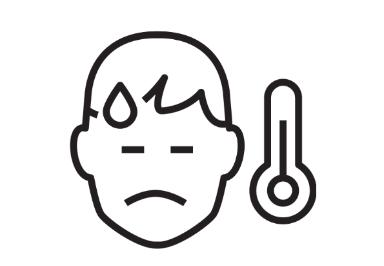
Please do not enter the library if you are unwell

Printing your certificate
We offer a Print & Collect service. You can send
us your digital certificate and organise to have it printed and ready to collect when you arrive at the library.

Digital Certificate help
Need help setting up your COVID-19 Digital Certificate? We’ve prepared some guides for you to read or watch. We’re also holding a step-by-step online help session where you can get help from our friendly tech team.
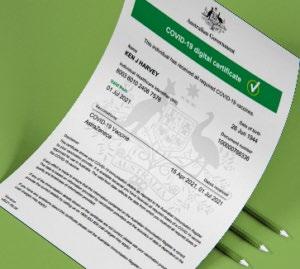
Click & Collect continues
If you are unable to enter the library for any reason, you can still access our collections via Click & Collect. Browse, reserve, and arrange collection through the Your Library ERL app, or just call your local library.


